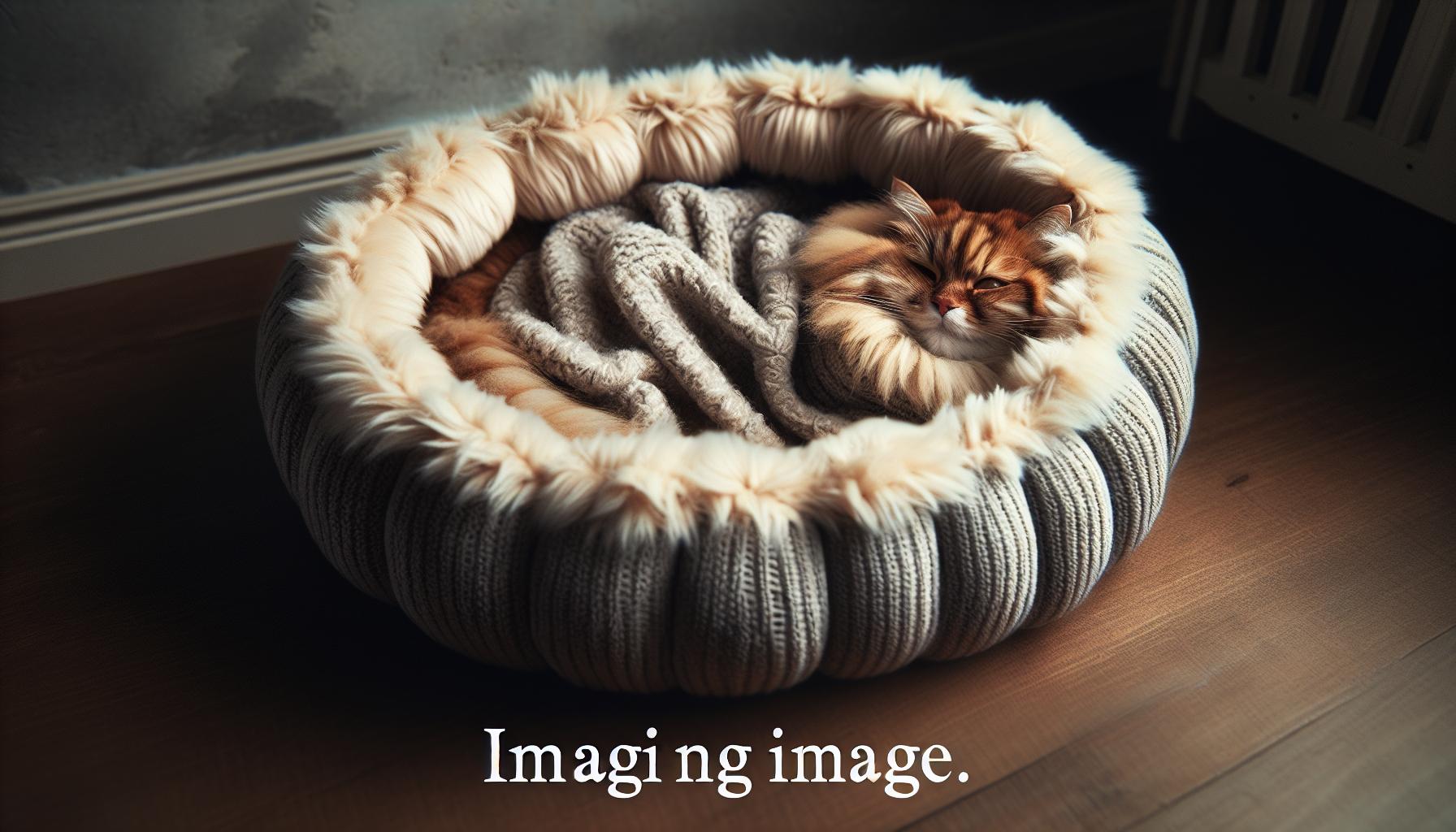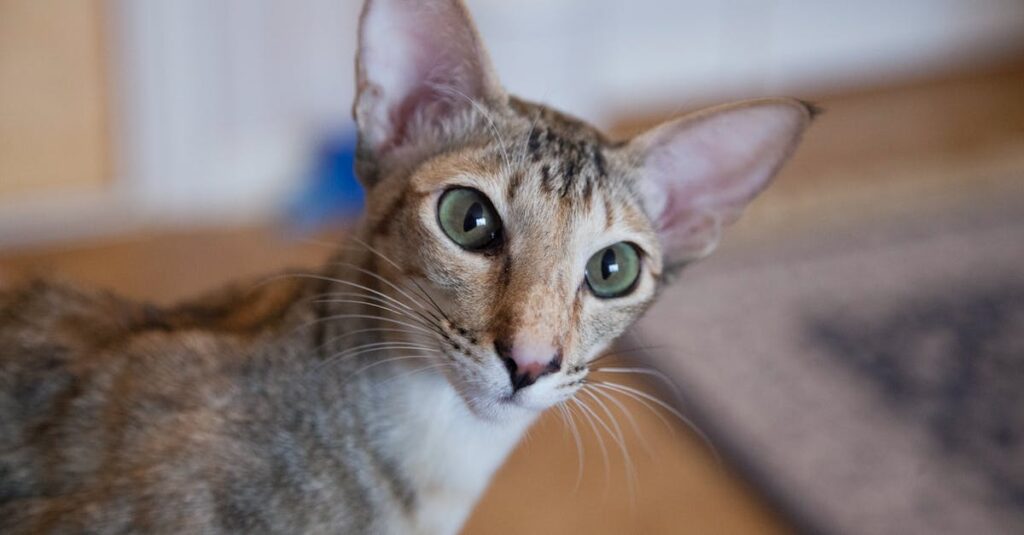Ever wondered what it takes to become the apple of your cat’s eye? Winning a cat’s heart isn’t just a stroke of luck; it’s an art. You’re about to learn how to master this art with finesse and a touch of feline wisdom.
Cats are known for their independent spirit, but that doesn’t mean they’re immune to affection. With the right approach, you can turn even the most aloof kitty into a purring companion that seeks out your company.
From understanding their unique personalities to learning the language of love in meows and purrs, you’re on the brink of unlocking the secrets to a lasting bond with your feline friend. Ready to be adored? Let’s dive in.
Understanding Your Cat’s Behaviour
Why Cats Are Different
Your cat’s behaviour might sometimes seem puzzling, but that’s part of what makes them so fascinating. Unlike dogs, which have been bred to follow human cues, cats have remained more independent in their domestication journey. Each cat has its own set of idiosyncrasies and quirks. Their behaviour reflects a complex blend of the domestic and the wild, sometimes making them inherently unpredictable.
Cats may not typically seek constant attention or validation from their owners. Instead, they prefer a more autonomous lifestyle. They enjoy having control over their environment – from when they eat to when they want to be affectionate. Importantly, a cat’s way of showing affection is often subtle and requires a keen eye to notice. For example, a slow blink from your feline friend is akin to a cat’s kiss and is their way of expressing trust and comfort around you.
Understanding that your cat’s behavior is as much a part of their charm as their independence is essential. This understanding is what can help you nurture a stronger bond with them.
Learning to Speak Cat
Communicating with your cat is more than just talking to them; it’s about learning their language. Cats communicate through a combination of vocalisations, body language, and even scent marking. Learning to interpret these signals is key to understanding your cat’s needs and emotions.
One of the most powerful tools in speaking cats is recognizing their vocal cues. Each meow, purr, hiss, or chirp serves a purpose:
- Meows are typically reserved for humans and can indicate anything from greetings to demands for food or attention.
- Purring often signifies contentment but can also be a sign of pain or distress, so context is essential.
- Hisses and growls usually indicate fear, aggression, or territoriality.
Observing your cat’s body language provides further insight. Relaxed posture, forward-facing ears, and a raised tail are signs of a happy cat, whereas flattened ears, a puffed-up coat, and a tucked tail signal fear or aggression. When your cat rubs against you, they’re not just seeking affection — they’re marking you as safe and familiar through scent.
By understanding and respecting these aspects of cat communication, you’ll be more in tune with what your cat is trying to tell you. This will enable you to respond appropriately and deepen the bond between you and your pet. Remember, patience is key — with it, you’re on the right path to winning over your cat’s heart.
Creating a Safe and Comfortable Environment
When you’re aiming to win a cat’s heart, you need to consider their holistic well-being. Creating a safe and comfortable environment is essential to earning trust and affection from your feline friend. It’s all about making your home their haven.
Providing the Perfect Cat Bed
Cats love to have their own cozy spot for napping, which is why investing in the perfect cat bed can be a game-changer. Cats crave warmth and security, so look for a bed that’s soft, snug, and situated in a quiet part of your home. Here are a few quick tips:
- Opt for beds with raised edges, as cats often enjoy the feeling of being enclosed.
- Place the bed in a warm location away from drafts.
- Consider your cat’s size; they should be able to stretch out fully.
Setting Up a Cat-friendly Space
Your cat’s environment should cater to their natural instincts. Enrichment is key to a cat-friendly space. Equip your home with items that satisfy their curiosity and need for play. Here’s what you should incorporate:
- Scratching posts to keep their claws in top shape and to deter them from furniture.
- High perches and shelves where they can survey their territory.
- Toys that mimic prey-like movements to stimulate their hunting instincts.
By integrating these elements, you’re sending a message of love and understanding to your cat.
Ensuring Proper Nutrition
Just like their environment, what your cat eats significantly affects their health and happiness. Providing proper nutrition means more than just filling their bowl with cat food. You should take into account:
- Life stage: Kittens, adults, and seniors have different nutritional needs.
- Activity level: More active cats may require higher calorie intake.
- Special dietary needs: Consult your vet for recommendations if your cat has specific health concerns.
| Life Stage | Protein | Fat | Carbohydrates |
|---|---|---|---|
| Kitten | High | High | Low |
| Adult | Moderate | Moderate | Low |
| Senior | Moderate | Low | Low |
Ensure you’re providing high-quality food that meets your cat’s requirements to maintain their overall well-being. Keeping them well-fed with the right diet is one of the purest expressions of affection.
Building Trust and Bonding
Cats are independent creatures, but with the right approach, you’ll notice your cat seeking your company more and more. The key to winning their heart is patience and understanding their behaviour. Let’s dive into how you can build that trust and form an unbreakable bond.
Respect Your Cat’s Personal Space
Cats are territorial and value their personal space. They’ll appreciate it when you recognize and respect this need. Start by observing their body language. If your cat is turning away, flattening its ears, or swishing its tail, they’re asking for some alone time. Grant them this space without taking offense. It’s not about you – it’s their natural instinct.
Here are a few tips to ensure you’re respecting their boundaries:
- Wait for your cat to come to you.
- Avoid disturbing them while they’re sleeping or eating.
- Create a safe retreat they can escape to whenever they feel overwhelmed.
By respecting their space, you silently communicate that you’re someone they can trust, paving the way for a deeper connection.
Gentle Handling and Petting Techniques
Understanding how to handle and pet your cat correctly is foundational to a strong bond. Cats often prefer not to be held or hugged tight – these actions can make them feel trapped. Instead, approach your cat side-on and avoid direct eye contact, as it can be perceived as a threat.
Use these techniques to form a positive association with your touch:
- Pet areas where scent glands are located for a comforting experience, such as under the chin or at the base of their ears.
- Read their reaction to your touch – a purring cat or one pushing into your hand is enjoying the attention.
- Learn when to stop – if they move away or seem tense, it’s time to take a break.
Mastering the art of petting is not just about affection; it’s a trust-building exercise.
Engage in Interactive Playtime
Interactive playtime is not only fun but also an effective way to build trust with your cat. It taps into their natural hunting instincts and allows them to bond with you in a positive, engaging way. Use toys that mimic the movement of prey, like a feather wand or a laser pointer, but always supervise play to ensure they don’t ingest parts of their toys.
Commit to regular play sessions, preferably at the same time each day, so your cat has a routine to look forward to. Keep playtime varied and entertaining:
- Rotate toys to keep things interesting.
- Use food puzzles to stimulate their mind and mimic the hunt-catch-eat cycle.
- Incorporate training with treats as a reward – yes, you can train cats!
Remember, each cat is unique, and their willingness to play can vary widely. It’s important to find out what your cat enjoys and go at their pace.
Meeting Your Cat’s Emotional Needs
Cats are complex creatures with a range of emotional needs that, if met, can lead to a stronger, more affectionate relationship between you and your feline friend. Understanding and catering to these needs is a vital part of winning your cat’s heart.
Regular Grooming and Brushing
Regular grooming and brushing are more than just about keeping your cat’s coat looking shiny. It reinforces the social bond that wild cats often form with one another. Your attention to their grooming:
- Minimizes hairballs, which can cause digestive issues
- Provides comfort from the physical contact
- Helps to establish a routine of positive interaction
Start slowly if your cat is not accustomed to being groomed, and gradually increase the time spent on this activity. Always use a gentle approach—with a brush suited for their fur type—to make the experience enjoyable for your cat.
Ensuring Mental Stimulation
Cats require a stimulating environment to stay mentally healthy and to prevent behavioural issues that may stem from boredom. It’s crucial to provide an array of activities that cater to their curious nature:
- Puzzle feeders to challenge their problem-solving skills
- Toys that encourage chasing and pouncing
- Window perches for bird-watching
Change the scenery inside your home by rearranging furniture or introducing new toys periodically. This simple change can make an old environment new and exciting for your cat.
Providing Affection and Attention
While respecting your cat’s space is essential, it’s equally important to show your love through affection and attention. Each cat has its own preference for how and when it wants to be touched, so pay attention to cues and:
- Look for moments when your cat is receptive to affection
- Use a soft voice to talk to your kitty, which can be very comforting
- Spend quality time playing and engaging with your cat every day
Remember, it’s about quality, not quantity. Short, positive interactions multiple times a day may be more beneficial than a single, prolonged session. Find a balance that works for your cat and stick to it. Building trust takes time, but with patience and consistency, you’ll find your bond growing stronger each day.
Improving Communication
Fostering a deep connection with your cat involves keen observation and an understanding of feline communication methods. To truly win your cat’s heart, you’ll need to master the art of speaking ‘cat’ — a language of subtle body movements and vocalizations.
Understanding Cat Body Language
Cats communicate voluminously through their body language, conveying everything from their current mood to their next action. To develop a stronger rapport with your feline friend, you must become adept at interpreting these silent signals.
Tail Movements: A tail held high often signifies confidence or happiness, whereas a twitching tail tip can indicate irritation. When your cat wraps their tail around you, it’s comparable to a human hug.
Ear Positions: Forward-facing ears show that your cat is engaged and curious. On the other hand, flattened ears are a clear sign of fear or aggression.
Whisker Placement: Puffed-out whiskers could mean your cat is startled or feels threatened, while relaxed whiskers often point to a contented cat.
By tuning into these and other body language cues, you’ll gain insights into your cat’s emotional state and needs, paving the way for a more harmonious relationship.
Using Positive Reinforcement
Cats may have a reputation for being independent, but they respond well to positive reinforcement, just like other pets. This technique reinforces good behaviour by rewarding your cat, thus making the behaviour more likely to be repeated in the future.
To effectively use positive reinforcement, follow these guidelines:
- Immediate Rewards: Timing is crucial. Offer treats or praise immediately after the desired behaviour occurs.
- Consistency: Be consistent with rewards to avoid confusing your cat.
- Variety of Rewards: Mix up the rewards with treats, playtime, or affection to keep your cat interested and motivated.
Using positive reinforcement creates an association of pleasure with obeying commands and can encourage a more engaging and trusting relationship.
Teaching Basic Commands
While cats are not typically known for their obedience training, teaching your cat basic commands can be a rewarding process for both of you.
Start with simple, clear commands such as ‘sit’ or ‘stay’. Be patient, and break down the training into manageable steps. Here’s a quick guide to help you teach your cat some essential commands:
- Sit: Gently press down on your cat’s backside while holding a treat above their head, and say’. Once they’re seated, give the treat.
- Stay: After your cat has mastered ‘sit’, hold out your hand in a stop gesture while saying ‘stay’. Take a step back and reward them for staying put.
- Come: Use a consistent sound like a bell or a specific word, and reward your cat whenever they come to you.
Remember that cats learn at their own pace, and training should always be a positive experience. Avoid any negative reinforcement, which can lead to stress and a damaged relationship. Keep training sessions short and sweet for the best results.
Conclusion
Unlocking the secrets to your cat’s heart isn’t as mystifying as it may seem. By tuning into their emotional needs with regular grooming and providing mental stimulation, you’re well on your way to a cherished bond. Remember, it’s about balancing affection with respect for their space, and learning their unique language through body cues and positive interactions. Don’t forget the power of patience and consistency when training—your cat’s trust and adoration are worth it. Embrace these tips and watch as a beautiful friendship unfolds between you and your feline friend.









